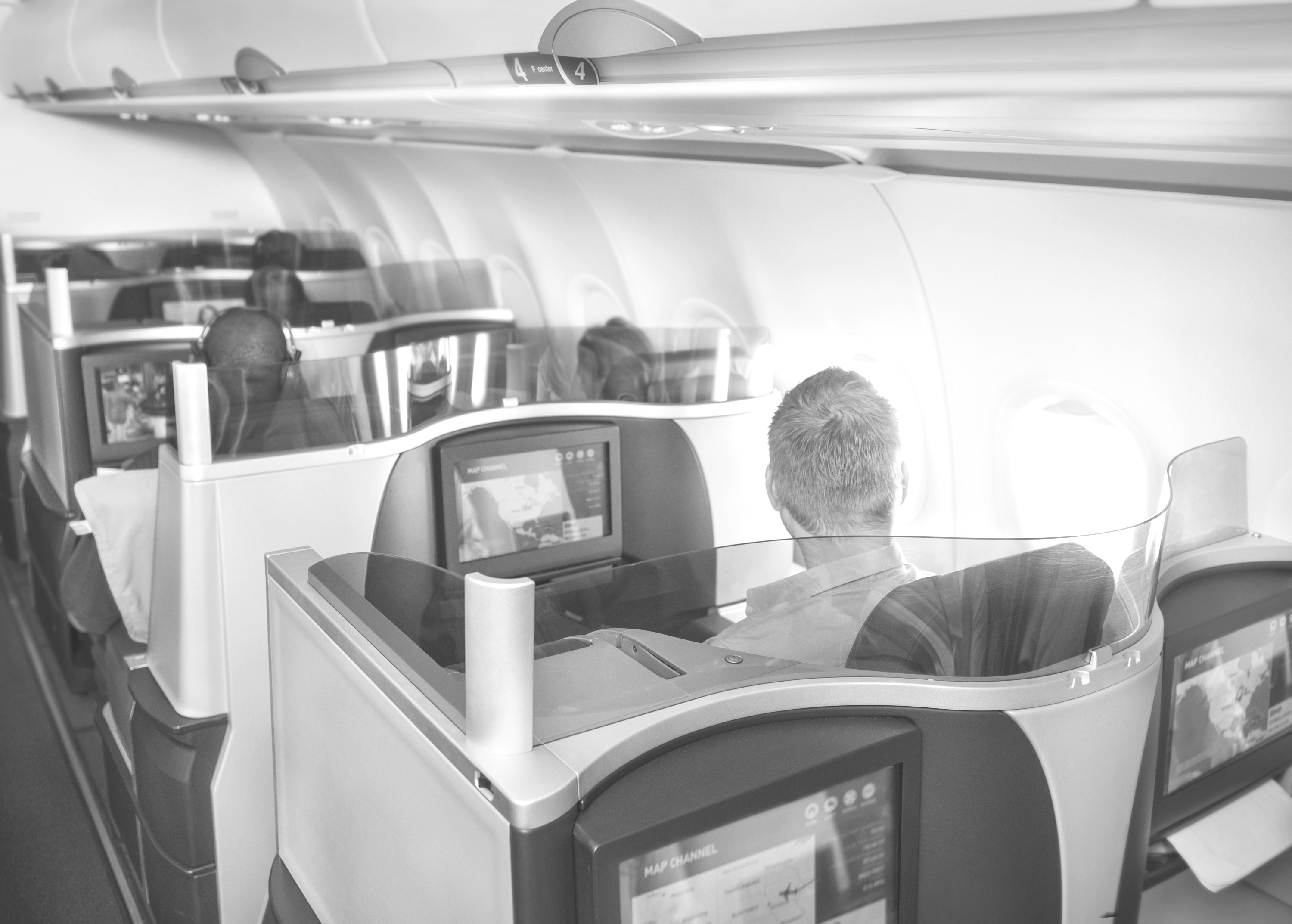When asked which airline seat they’d choose to avoid the discomfort (and embarrassment) of airsickness, the consensus among a random sampling of my acquaintances was a big comfy seat up front. A first-class seat, in other words.
Comfort as the antidote to discomfort. Makes sense, right?
Seemingly sensible or not, it turns out that a first-class seat is as likely to exacerbate motion sickness as a coach seat at the very rear of the plane. The most soothing seats, from an airsickness standpoint, are those that minimize nausea-inducing turbulence. And those are the seats directly over the wing, in the middle of the plane, because they pitch the least when the aircraft flies through bumpy air.
So, for those who are prone to airsickness, the first step in keeping their symptoms at bay is booking a seat over the wings. Since the center of the plane is almost always populated with coach-class seats, that strategy also comports nicely with a cost-saving approach to air travel.
Another seat-related thought: If claustrophobia isn’t a problem, book a window seat. Focusing on the horizon can help mitigate airsickness.
A few other suggestions:
- Don’t eat heavy, greasy meals before flying
- Don’t drink alcohol before or during the flight
- Avoid reading or other activities that require close-up vision
- Use the air vents to keep air flowing
- Dramamine and other medications for motion sickness are available over-the-counter, and more powerful meds can be obtained with a doctor’s prescription
If none of the above hold off the nausea, there’s always the barf bag.
Reader Reality Check
When was the last time you saw someone get airsick on a plane? (I ask because it seems to be an increasingly rare occurrence.)
After 20 years working in the travel industry, and almost that long writing about it, Tim Winship knows a thing or two about travel. Follow him on Twitter @twinship.
This article first appeared on SmarterTravel.com, where Tim is Editor-at-Large.


Leave a Reply